Setting sail on the vast blue seas, with horizons stretching beyond imagination, is a dream many of us share. All-inclusive cruises offer a unique blend of relaxation, adventure, and luxury.
But how long should one spend on this floating haven? From brief weekend escapes to month-long odysseys, the length of your cruise can transform your experience.
So How Long is a Cruise… Really?
A cruise’s duration varies widely based on the itinerary and purpose. Short cruises, often called weekend getaways, last 2-5 days and are perfect for quick escapes.
Medium-length cruises span 6-9 days, offering a balance of relaxation and exploration. Long cruises, ranging from 10-24 days, provide deeper cultural immersions.
World cruises, the ultimate sea journey, can last several months, circumnavigating the globe.
However, the “perfect” cruise length is subjective, influenced by personal preferences, budget, and available time. Whether you’re seeking a brief retreat or a lengthy adventure, there’s a cruise tailored for every traveler’s desire.

The Evolution of Cruise Lengths
Cruising has long been synonymous with luxury, relaxation, and adventure. But like many great things, it has evolved. To truly understand the present, we must sail back in time.
A Brief History of Cruising
In the early days, cruising was not about leisure but necessity. Sea voyages were mainly for trade, migration, or warfare.
But by the 19th century, things began to shift. Steamships made sea travel more predictable, and soon, the elite started embarking on transatlantic journeys for pleasure.
These voyages weren’t exactly short; after all, the question of “how long is a cruise” hadn’t quite taken the shape we know today.
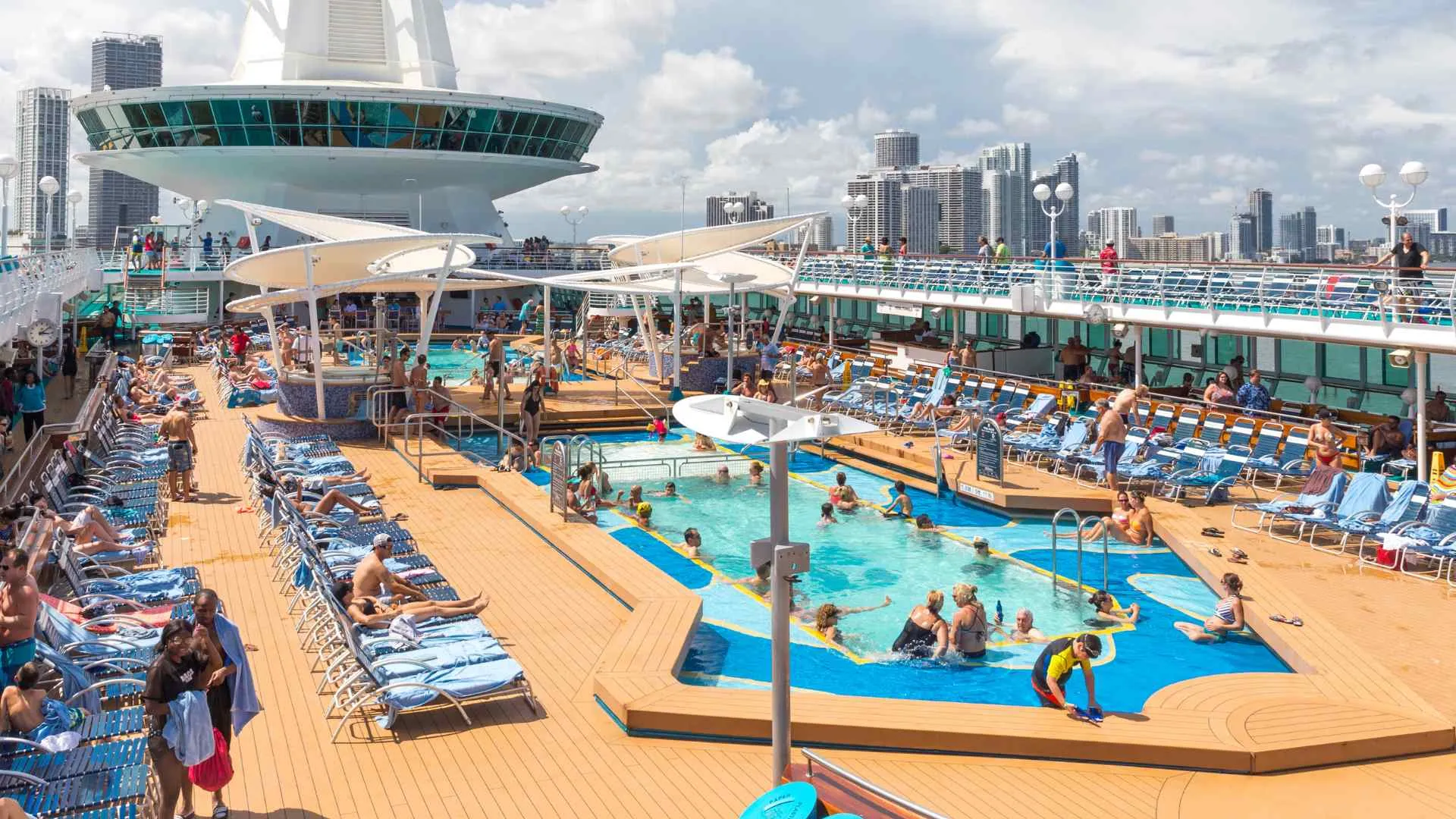
Modern Times: The Rise of Variety
Fast forward to the 20th century, when technological advancements and growing interest made cruising more accessible to the masses. It’s here that we begin to see variety in cruise lengths.
While transatlantic journeys could still take a week or more, companies started offering shorter cruises, making the sea experience more accessible to those with limited time.
Short weekend cruises became increasingly popular, particularly in regions like the Caribbean.
But for those wondering “how long is a cruise when I truly want to explore?”, extended cruises that spanned weeks or even months, began making waves, providing in-depth exploration of multiple continents.

Factors That Shaped Cruise Durations
There are several factors that contributed to the diversification in cruise lengths:
Technological Advancements
The construction of larger and faster ships meant that longer distances could be covered in shorter times, allowing for more flexible itineraries.
Traveler Demands
As the world became busier, there arose a demand for shorter getaways. Conversely, those with more time on their hands sought longer, immersive experiences.
Geographical Appeal
Certain destinations, by virtue of their beauty and allure, warranted longer stays, while others were perfect for quick stopovers.
Economic Considerations
The rise of budget travelers meant cruise lines had to innovate, offering shorter, more affordable trips to cater to this segment.
In essence, the question of “how long is a cruise” has no one-size-fits-all answer. It’s a beautiful tapestry of history, technology, and human desire, woven together to create the myriad of cruising options we see today.
Whether you’re looking for a brief escape from the daily grind or a prolonged journey into the unknown, there’s a cruise out there waiting for you.

Short Cruises: A Quick Getaway
The allure of the seas doesn’t always mean one has to be away for weeks. For many, a brief respite from the hustle and bustle is all they seek.
Enter: the short cruise. If you’ve ever found yourself wondering “how long is a cruise when I only have a weekend or a few days?”, this is for you.
Defining the Short Cruise
Typically, when we talk about short cruises, we’re referring to voyages that last anywhere from 2 to 5 days. These short cruises are perfect for those looking to dip their toes into the world of cruising without committing to a long journey.
Popular Destinations and Itineraries
Short cruises often focus on destinations that are close to major embarkation ports. For example:
- The Caribbean: Many short cruises set sail from Florida, offering quick trips to the Bahamas or Cozumel. These trips provide a tantalizing taste of tropical paradise, from white sandy beaches to vibrant local markets.
- The Mediterranean: If you’re embarking from Europe, a short cruise might take you from Barcelona to the picturesque coasts of France or the Italian Riviera.
- Australia’s Coast: Short cruises from Sydney or Brisbane can transport travelers to spots like the Great Barrier Reef or the paradisiacal islands nearby.

What to Expect Onboard
While these cruises are brief, they don’t skimp on luxury or entertainment:
Dining Experiences
From gourmet restaurants to buffets with a variety of cuisines, short cruises ensure every meal is an event.
Entertainment
Live shows, poolside activities, and nightclubs ensure there’s never a dull moment.
Relaxation
Spas, pools, and lounges allow passengers to kick back and truly relax.
Pros and Cons of Choosing a Short Cruise
Pros:
- Accessibility: Perfect for those with time constraints.
- Budget-Friendly: Often more affordable than longer alternatives.
- Variety: Enables frequent travelers to experience multiple destinations in a short span.
Cons:
- Limited Exploration: Shorter stops might mean not getting a deep dive into each destination.
- Packed Schedules: With limited time, onboard activities and shore excursions can feel rushed.
In conclusion, short cruises offer a fantastic introduction to the world of cruising. They answer the pressing question of “how long is a cruise when I just want a quick getaway?” with aplomb, providing rejuvenation and a dash of adventure in a compact package.
Whether you’re a first-timer or a seasoned traveler short on time, there’s a world of short cruises waiting to be explored.
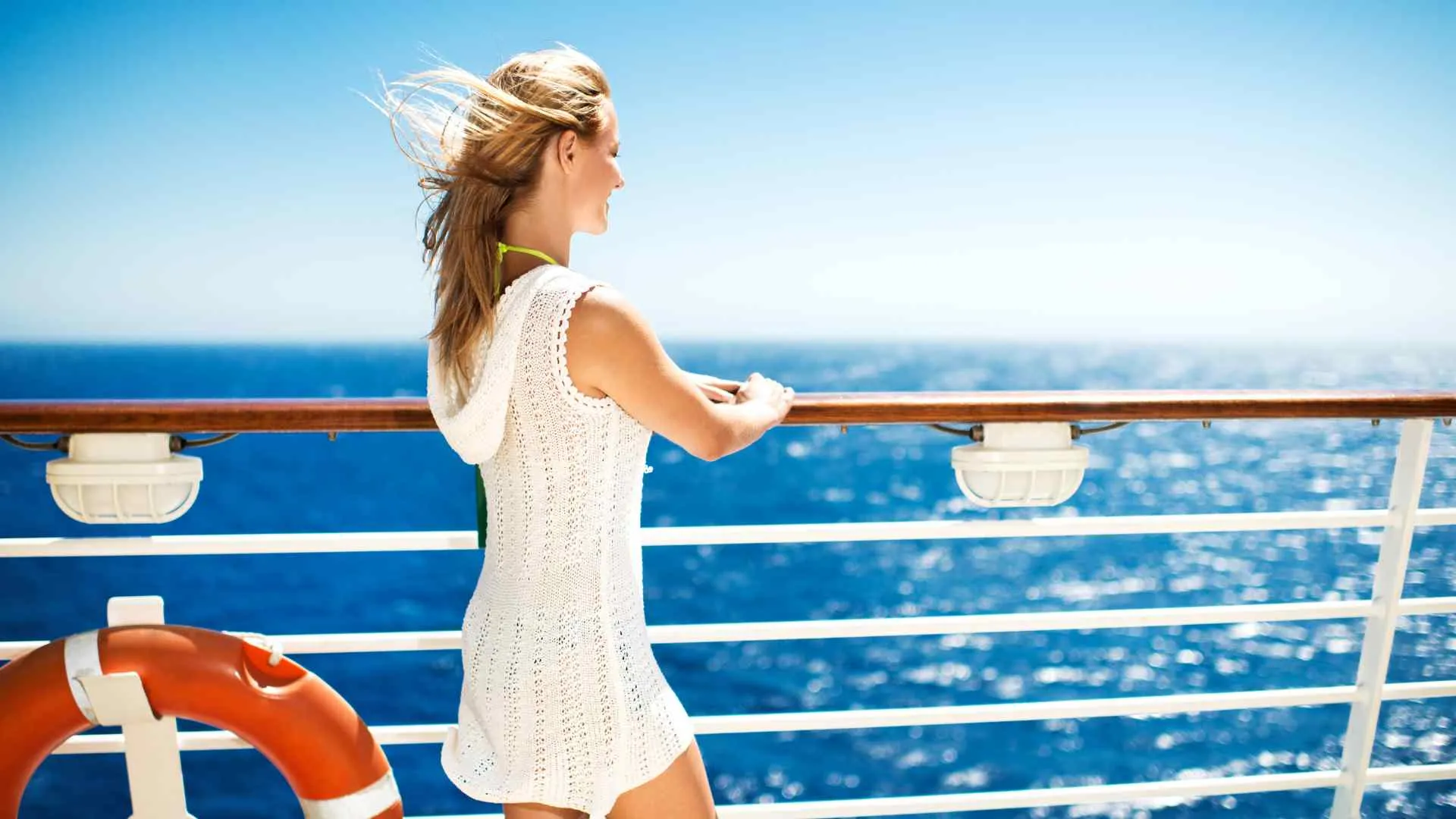
Medium-Length Cruises: The Sweet Spot?
As we venture deeper into the spectrum of cruise lengths, we arrive at medium-length cruises. Often described as the “Goldilocks” of cruise durations, they’re not too short, not too long, but just right for many.
For those asking, “how long is a cruise when I want a balance of relaxation and exploration?”, medium-length cruises might hold the answer.
What Constitutes a Medium-Length Cruise?
A medium-length cruise typically spans between 7 to 14 days. It offers a more extended experience than short cruises, allowing passengers to delve deeper into destinations and onboard activities.
Exploring Multiple Destinations
One of the highlights of medium-length cruises is the opportunity to explore multiple destinations without the rush:
- Caribbean Explorer: Departing from places like Miami or Fort Lauderdale, these cruises touch several Caribbean islands, giving travelers a taste of diverse cultures and landscapes.
- European Voyages: From the ancient ruins of Greece to the romantic canals of Venice, a medium-length cruise in the Mediterranean can be a history lover’s dream.
- Alaskan Adventures: Sailing from Seattle or Vancouver, these cruises offer breathtaking views of glaciers, wildlife, and pristine landscapes.
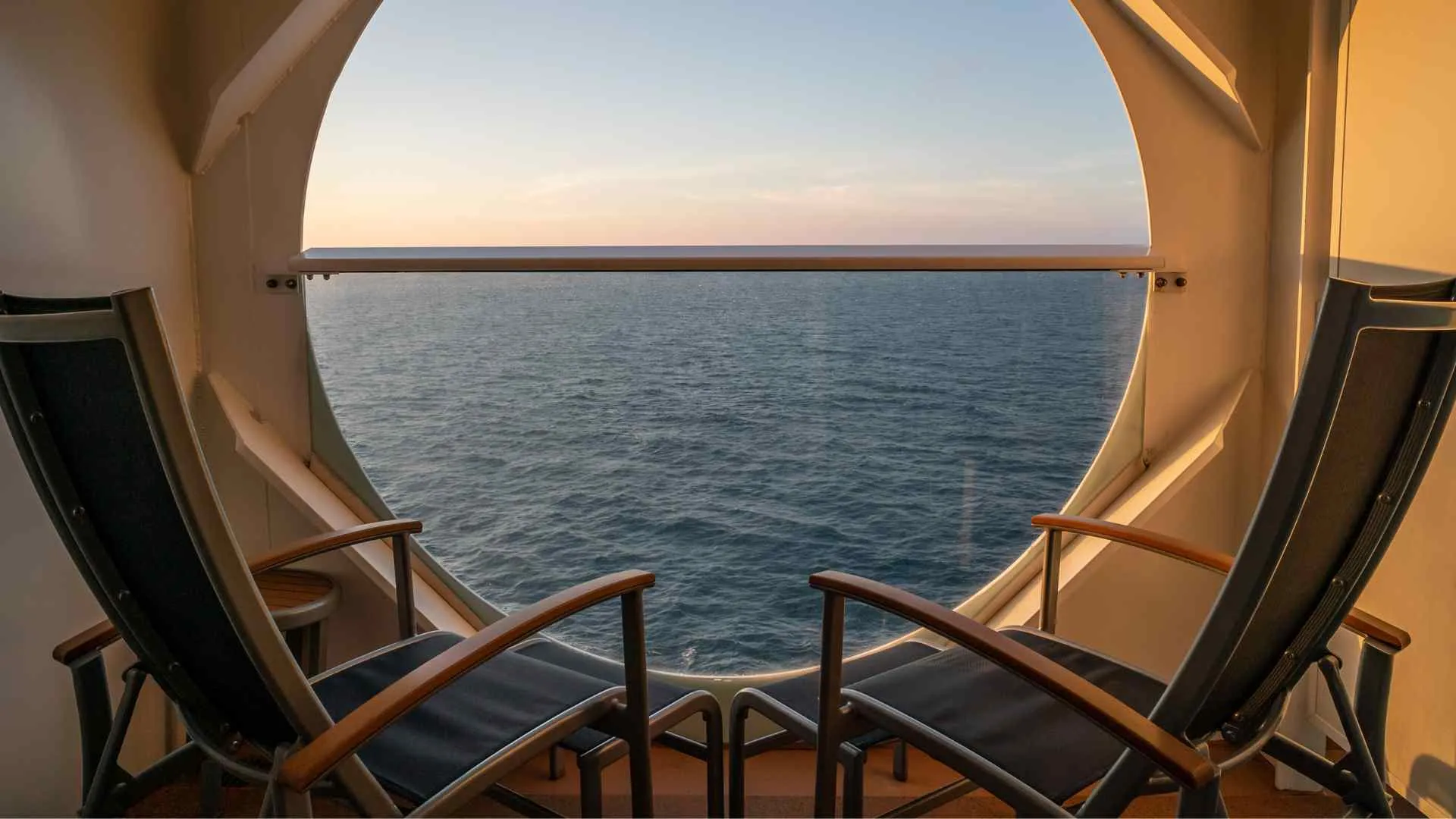
Life Onboard: A Deeper Dive
With more days at sea, there’s a chance to truly immerse oneself in the cruise experience:
Culinary Delights
Specialty dining nights, tasting menus, and themed dinners can turn meals into unforgettable experiences.
Entertainment Extravaganza
Broadway-style shows, live bands, and themed parties often grace the decks of medium-length cruises.
Enrichment Activities
Lectures on the destinations, cooking classes, or craft workshops can add depth to the journey.
Pros and Cons of a Medium-Length Cruise
Pros:
- Depth and Breadth: Enough time to explore multiple destinations without feeling rushed.
- Variety of Experiences: Onboard activities are more diverse and enriched.
- Value for Money: Often provides a balance between cost and the breadth of experiences.
Cons:
- Time Commitment: Might be challenging for those with tight work schedules or commitments.
- Potential for Repetition: On some ships or routes, entertainment or dining options might feel repetitive towards the end.
In essence, medium-length cruises strike a balance. They cater to those who yearn for depth in their travels, offering a richer tapestry of experiences than shorter voyages.
For many pondering “how long is a cruise that gives me a holistic experience?”, this category provides a compelling answer. Whether it’s the allure of diverse destinations or the plethora of onboard experiences, medium-length cruises beckon with promises of unforgettable memories.

Long Cruises: For the True Cruise Lover
Venturing beyond the confines of a typical vacation timeline, long cruises are the epitome of luxury, discovery, and deep immersion. They cater to those whose hearts echo with the sentiment: “Why rush when the world has so much to offer?”
For those who’ve questioned, “how long is a cruise that truly lets me escape?”, the world of long cruises offers an intriguing proposal.
The Length and Breadth of Long Cruises
A long cruise usually ranges from 15 days to a month-long cruise adventure, sometimes even stretching beyond that. These cruises aren’t just about covering more destinations; they’re about savoring each one.
Unique Destinations and Experiences Available
With extended durations, long cruises have the luxury of venturing off the beaten path:
- Transpacific & Transatlantic: Crossing vast oceans and exploring far-flung islands or cities on either end.
- Asian Adventures: From the futuristic skyline of Tokyo to the tranquil beaches of Bali, long cruises in Asia can be a tapestry of contrasts.
- South American Sojourns: Cruises that cover everything from the carnival vibes of Rio de Janeiro to the mystique of Machu Picchu.
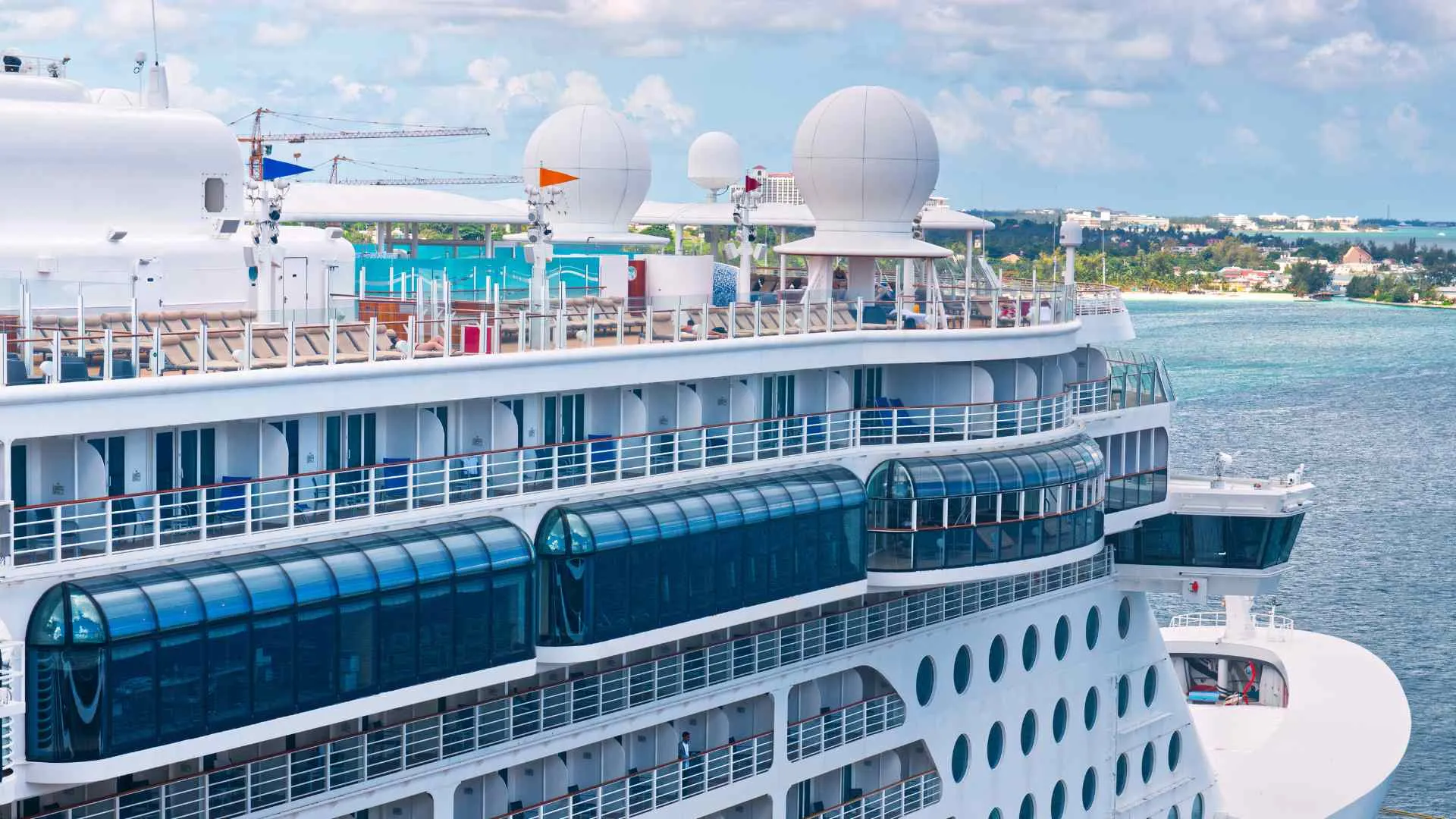
Life Onboard: The Extended Edition
The extended timeline means an even richer onboard experience:
Culinary Journeys
Dining becomes an expedition of its own, with themed nights that reflect the ship’s current location or globally inspired gourmet feasts.
Varied Entertainment
From movie marathons under the stars to full-scale theater productions, the offerings are diverse and ever-changing.
Personal Growth
Many long cruises offer courses – be it languages, dance, or even digital skills – enabling passengers to return with a new skill set.
Pros and Cons of Embarking on a Long Cruise
Pros:
- Deep Exploration: The luxury of time means deeper immersion in each port of call.
- Holistic Experience: From onboard amenities to destination-specific activities, everything can be enjoyed at a leisurely pace.
- Building Connections: Longer journeys allow for stronger friendships and deeper connections with fellow travelers.
Cons:
- Extended Time Away: Being away from home or work commitments for extended periods might be challenging for some.
- Cost: Longer durations often mean a heftier price tag.
- Adapting to Sea Life: The longer time at sea might require some adjustment, especially for those prone to seasickness.
In the grand tapestry of cruise offerings, long cruises are the intricate, detailed sections that demand time and attention. They answer the question “how long is a cruise that lets me forget the world and dive deep into new experiences?” with aplomb.
For those with time on their hands and a thirst for in-depth exploration, long cruises are the perfect escape from the everyday grind, promising a world of memories and experiences.

World Cruises: The Ultimate Journey
Sailing beyond the ordinary, world cruises represent the pinnacle of cruise experiences. These voyages are for those who’ve looked at a globe, eyes alight with wonder, and thought, “I want to see it all.”
When one asks, “how long is a cruise that can show me the wonders of the world?”, world cruises stand tall as the grand answer.
The Majestic Scale of World Cruises
World cruises often last several months, with some spanning up to half a year. They’re designed to circumnavigate the globe, touching continents, cultures, and climatic zones, offering a mosaic of experiences.
Destinations Beyond Imagination
The beauty of a world cruise lies in its diverse itinerary:
- Cultural Capitals: Stops in cities like Paris, Sydney, Tokyo, and Cape Town offer a deep dive into the world’s vibrant urban landscapes.
- Hidden Gems: Lesser-known ports in places like Polynesia, the Maldives, or remote parts of Southeast Asia that might be overlooked on shorter cruises.
- Changing Sceneries: From tropical paradises to icy fjords, the landscapes continually shift, offering a visual treat.

Life Onboard: A Home Away from Home
Given the extended duration, cruise ships become floating homes:
Culinary Odyssey
The dining experiences reflect the ship’s journey, with menus inspired by the region being explored.
Diverse Entertainment
With such a long voyage, entertainment is continually evolving, often including guest performers from visited destinations.
Personal Development
From expert lectures about upcoming ports to workshops and hobby classes, there’s ample opportunity for personal enrichment.
Pros and Cons of Setting Sail on a World Cruise
Pros:
- Comprehensive Exploration: It’s a journey covering the breadth and depth of our planet’s wonders.
- Convenience: No need to worry about multiple travel arrangements; the ship takes care of it all.
- Exclusive Experiences: Special shore excursions, often exclusive to world cruise passengers, deepen the travel experience.
Cons:
- Duration: Such a long commitment is not feasible for everyone.
- Cost: World cruises are a significant investment, both in terms of money and time.
- Preparedness: It requires considerable planning, from ensuring one’s health for the long journey to managing affairs back home.
A world cruise is more than just a vacation – it’s a life-changing journey. For those who’ve pondered “how long is a cruise that encapsulates the essence of our planet?”, world cruises provide a thrilling, fulfilling response.
Embarking on one means seeing the world not just as a tourist, but as a global citizen, collecting stories, memories, and experiences from every corner of the earth.

Factors Influencing Cruise Length
Cruise length is more than just a number on a calendar. It’s an intricate balance of various factors, each playing a role in defining your cruising experience.
For those asking, “how long is a cruise that aligns with my personal preferences?”, understanding these underlying determinants is key.
Destination and Distance
The allure of specific destinations and the distance between ports play a crucial role:
- Remote Wonders: Want to explore Antarctica or the far reaches of the South Pacific? These locations necessitate longer voyages due to their remote nature.
- Neighboring Attractions: Cruises in regions with closely-packed attractions, like the Mediterranean, can offer more stops in a shorter duration.
Onboard Amenities and Experiences
The ship itself can influence the length:
- Luxury Liners: Premium ships with a plethora of amenities might offer longer voyages to ensure guests can fully utilize the facilities.
- Specialty Cruises: Themed cruises, such as music festivals or culinary voyages, might have fixed durations to align with the theme’s schedule.
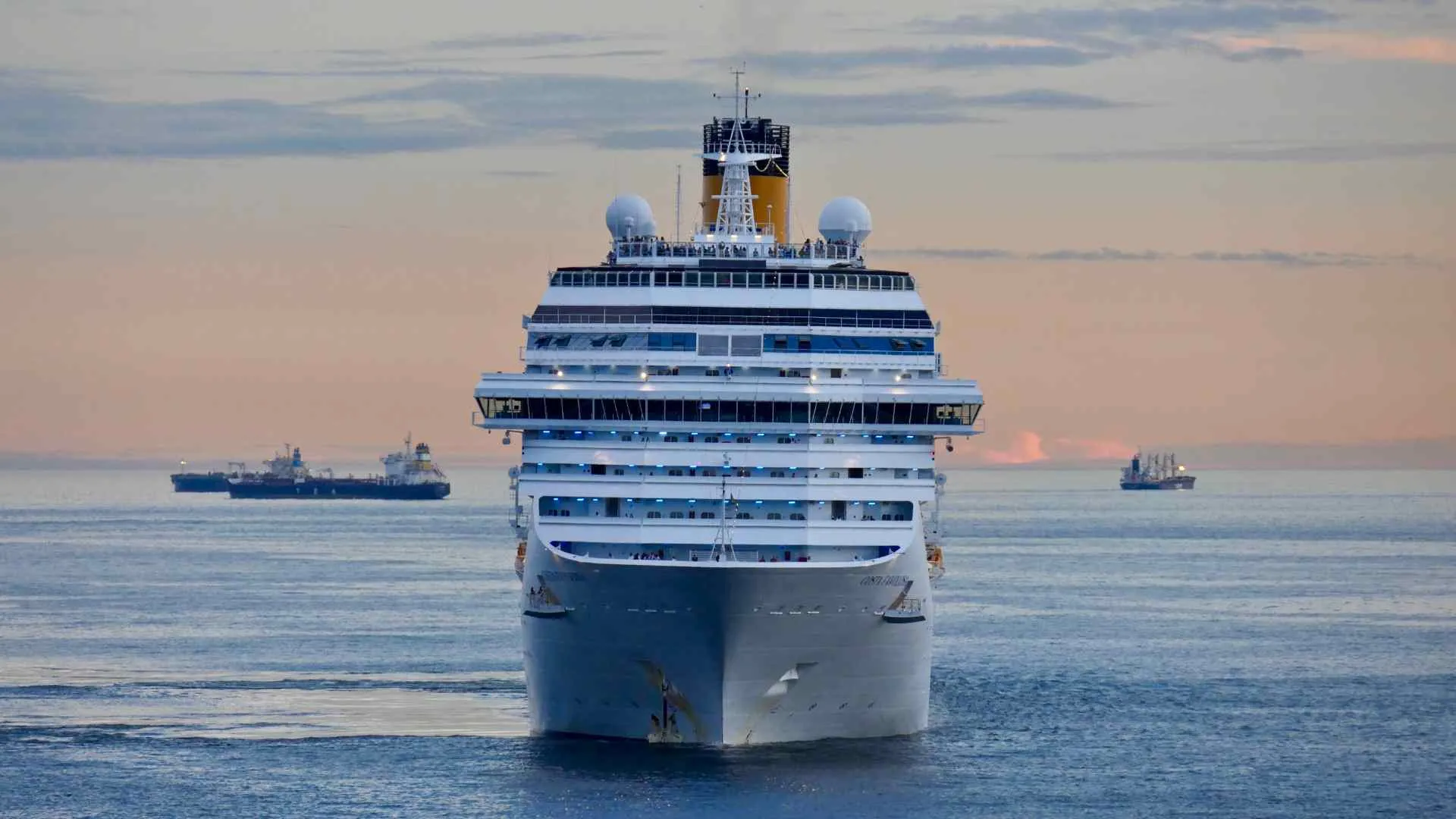
Vacation Time and Budget
Personal constraints also come into play:
- Vacation Days: Not everyone has the luxury of taking extended breaks. Work commitments, school schedules, and personal obligations can dictate cruise length.
- Financial Considerations: Longer cruises typically mean a bigger budget, both for the cruise fare and incidental expenses.
Event or Celebration Cruises
Special occasions can define the duration:
- Honeymoons: Newlyweds might opt for longer, more immersive experiences.
- Milestone Celebrations: Be it a landmark birthday or an anniversary, special occasions might call for short, memorable getaways.
Personal Travel Goals
What you seek from the journey can influence its length:
- Relaxation: Those looking for a rejuvenating break might prefer medium to long cruises with plenty of sea days.
- Exploration: Adventure seekers might lean towards cruises with diverse port calls, irrespective of length.
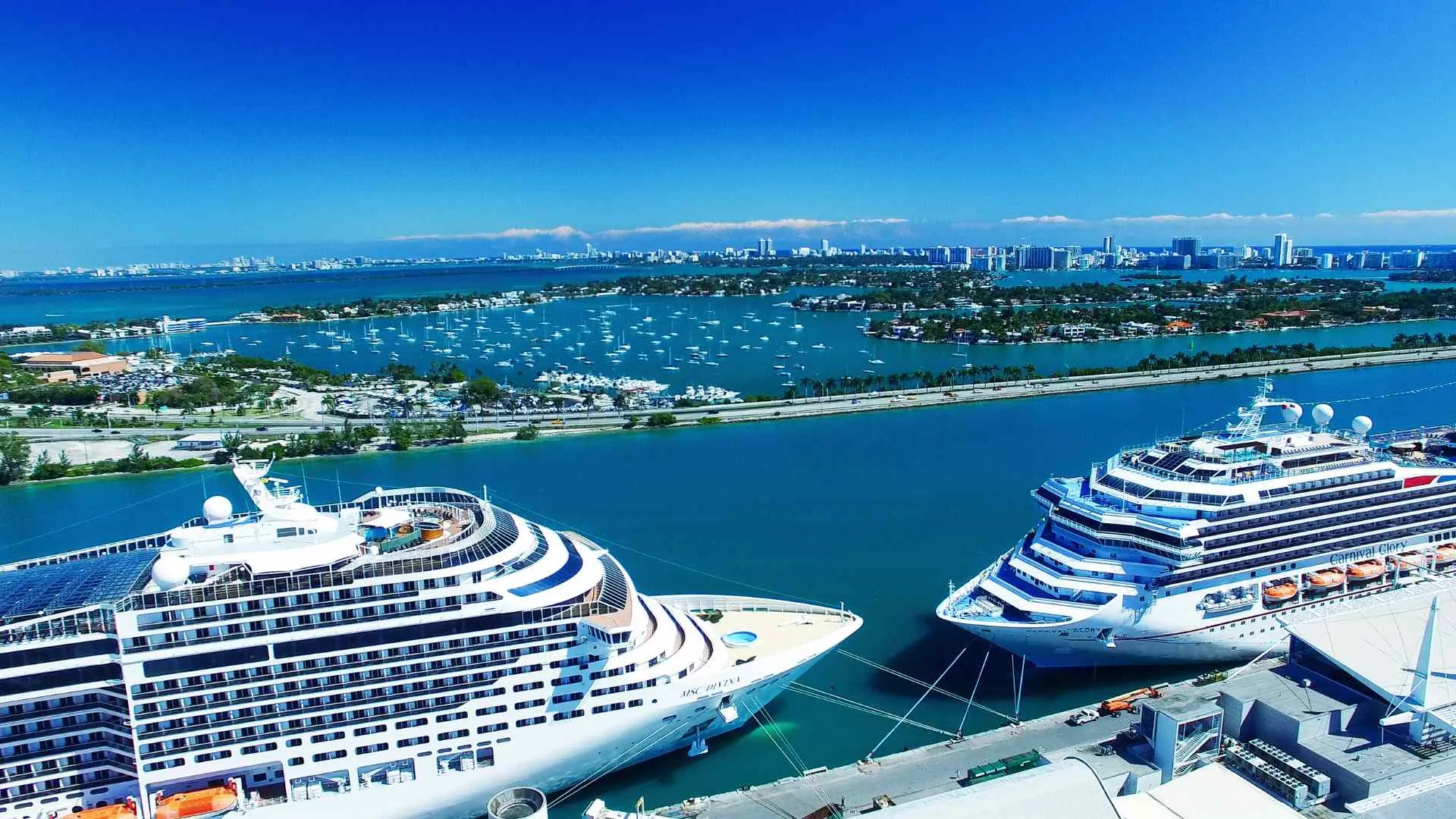
Season and Weather
Nature, too, has a say:
- Seasonal Routes: Some regions, like Alaska or Northern Europe, have specific cruising seasons, which can dictate available durations.
- Weather Patterns: Tropical storm seasons or monsoons can influence cruise schedules and lengths.
Repeat or First-time Cruisers
Experience can be a determinant:
- First-timers: Those new to cruising might opt for shorter voyages to test the waters.
- Veteran Cruisers: Seasoned cruisers might prefer longer, unique routes, seeking novel experiences.
In conclusion, determining “how long is a cruise” goes beyond mere days and nights. It’s a reflection of personal preferences, constraints, desires, and even nature’s whims.
By understanding the factors influencing cruise length, you can tailor your cruise experience to create a voyage that’s just right for you. Whether you’re a first-time cruiser or a seasoned sailor, being attuned to these aspects ensures a journey that resonates with your travel aspirations.

How to Choose the Right Cruise Length for You
When you’re standing on the precipice of adventure, gazing at the vast expanse of cruising options, it’s natural to wonder, “How long is a cruise that’s perfect for me?”
The answer isn’t found in brochures or ads but within your aspirations, needs, and circumstances. Here’s a guide to help you navigate these waters and anchor on the right decision.
Assess Your Goals
Start by identifying the primary purpose of your cruise:
- Rest and Relaxation: If you’re seeking a tranquil break, consider medium to long cruises. The ample sea days provide plenty of opportunities to rejuvenate.
- Cultural Immersion: For a deep dive into diverse cultures, longer itineraries or world cruises can be ideal.
- Quick Getaway: If you’re pressed for time but need an escape, short cruises offer a refreshing break without a long commitment.
Consider Your Travel Companions
Who you’re traveling with can shape the cruise experience:
- Families: Short to medium cruises, especially during school holidays, with family-friendly amenities are a hit.
- Couples: Depending on the occasion (like honeymoons), a longer, romantic cruise might be apt.
- Solo Travelers: Depending on comfort levels and goals, any cruise length from short getaways to extensive world cruises can appeal.

Budgeting: Time and Money
Align your cruise choice with practical constraints:
- Financial Budget: Decide on a comfortable spending range. Remember, it’s not just the ticket price; consider onboard expenses, shore excursions, and travel to and from the port.
- Time Budget: Determine how many days you can allocate to cruising. Factor in travel time to the departure port and any potential jet lag.
Past Travel Experiences
Your history of travels can offer insights:
- First-time Cruisers: Trying a shorter cruise can give you a taste of the experience without overwhelming commitment.
- Experienced Cruisers: With a love for the sea already established, you might be more inclined to explore longer, unique itineraries.

Destination Desires
Some destinations dictate the cruise length:
- Remote Locales: If places like Antarctica, the Galápagos, or certain Pacific islands beckon, be prepared for longer voyages.
- Popular Ports: For destinations like the Caribbean, Mediterranean, or parts of Southeast Asia, a range of cruise lengths from short to long is available.
Listen to Others, but Trust Yourself
While reviews and recommendations can guide:
- Peer Insights: Talk to friends or family who’ve cruised before. Their experiences can offer valuable insights.
- Online Reviews:Cruise forums and review sites can give a glimpse into various cruise lengths and experiences.
- Trust Your Gut: While advice is valuable, remember that everyone’s preferences are unique. Trust your instincts and choose what feels right for you.
In the vast ocean of cruise options, finding the perfect fit might seem daunting. But by introspecting on what you seek, understanding your constraints, and leveraging both personal and external insights, you can pinpoint the answer to “how long is a cruise that’s tailor-made for me?”.
Remember, the journey is as significant as the destination. Whether you choose a short, medium, long, or world cruise, ensure it resonates with your spirit of adventure and your vision of the ideal getaway.
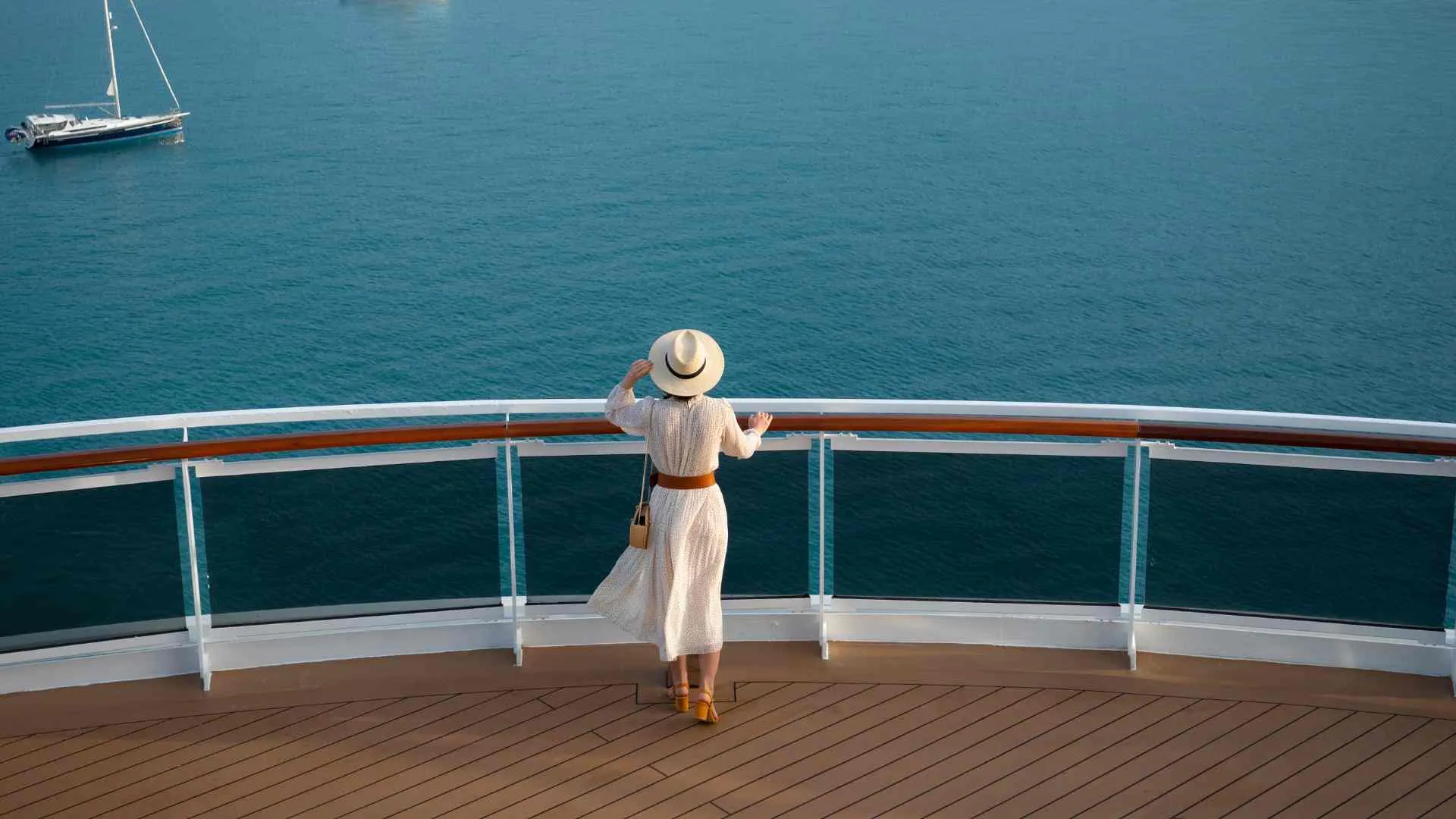
Preparing for Your Cruise
Embarking on a cruise, irrespective of its length, is a thrilling experience. Yet, just like any voyage, the smoother the preparation, the more enjoyable the journey.
If you’ve ever wondered, “Beyond knowing how long is a cruise, what else should I be aware of?”, this section aims to make your cruising departure as seamless as your time onboard.
Know the Itinerary Inside Out
Familiarize yourself with the journey:
- Ports of Call: Research each destination, looking into culture, currency, main attractions, and local customs.
- Sea Days: Knowing when you’ll have a full day on the ship can help in planning onboard activities.
Check Documentation
Ensure all paperwork is in order:
- Passport and Visas: Ensure your passport is valid for at least six months beyond your return date. Also, check if any of your destinations require visas.
- Boarding Passes and Cruise Documents: Most cruise lines allow online check-in, which can speed up the boarding process.
- Travel Insurance: Consider getting a policy that covers potential cruise-specific issues, like missed ports or onboard medical emergencies.
Pack Smart
Your luggage should reflect the cruise’s nature:
- Dress Codes: While many cruises have relaxed attire, some may have formal nights. Check the cruise line’s guidelines.
- Essentials: Sunscreen, medications, swimwear, comfortable footwear, and adaptors are a must.
- Theme Nights or Events: Some cruises have themed nights or special events. Packing accordingly can enhance the experience.
Plan Onboard Activities
Maximize your time on the ship:
- Book in Advance: Popular activities, spa treatments, or specialty dining can get booked quickly. Reserving spots early ensures you don’t miss out.
- Daily Planners: Most ships provide a daily schedule. Reviewing this can help you plan your day.
Budget for Additional Expenses
Prepare for costs beyond the cruise ticket:
- Onboard Expenses: Consider gratuities, specialty dining, onboard shopping, and any premium activities.
- Shore Excursions: While you can book through the cruise line, sometimes exploring independently or through local operators can be both cost-effective and enriching.
Health and Safety Precautions
Stay safe and healthy:
- Vaccinations: Based on your destinations, certain vaccines might be recommended or required.
- Medication: Bring an ample supply of any prescription medicines and consider a basic first-aid kit.
- Safety: Familiarize yourself with the ship’s safety protocols, attend mandatory safety drills, and be cautious during shore excursions.
Stay Connected
If staying in touch is essential:
- Internet Packages: Check with the cruise line for internet packages. Remember, connectivity might be slower at sea.
- Inform Loved Ones: Share your itinerary with friends or family so they’re aware of your whereabouts.
Embarking on a cruise, whether it’s your first or fiftieth, is a special experience. Knowing “how long is a cruise” is just the tip of the iceberg.
By preparing diligently, you ensure a journey that’s not just smooth sailing but also filled with memories that you’ll cherish long after you’ve disembarked. So, as you stand on the deck, feeling the sea breeze and looking ahead, you’ll know you’re truly ready for the adventure that awaits.
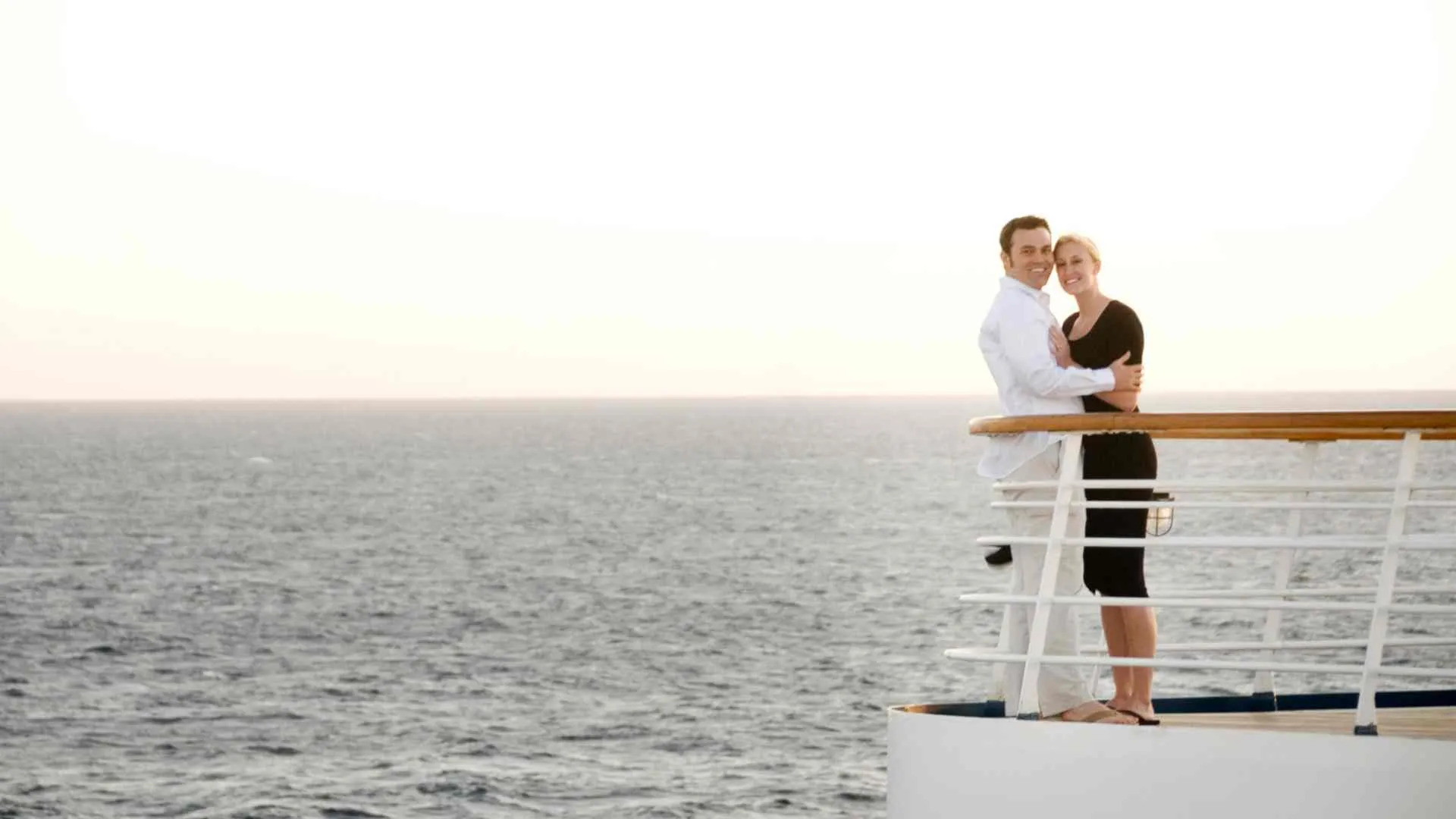
The Future of Cruising
The world of cruising has never been static. From the grand ocean liners of the past century to the floating cities of today, cruises have continually evolved, mirroring societal shifts and technological advancements.
As we stand on the cusp of a new era, many wonder, “Beyond asking how long is a cruise, what can we expect from the future of this industry?” Let’s set our compass towards the horizon and explore the emerging trends in cruising.
Enhanced Health and Safety Protocols
In light of recent global events:
- Advanced Sanitation: Expect more rigorous cleaning procedures, upgraded air filtration systems, and UV light disinfection.
- Health Monitoring: Rapid testing, health checks, and contact tracing technologies might become commonplace onboard.
Sustainable Cruising
As environmental concerns take center stage:
- Eco-friendly Fuels: More ships will transition to liquefied natural gas (LNG) or hybrid power sources to reduce emissions.
- Waste Reduction: Efforts to minimize single-use plastics and enhance waste treatment systems will intensify.
- Collaborative Conservation: Cruise lines will collaborate more with local communities and conservationists to protect marine environments and promote sustainable tourism.
Technological Advancements
The digital age sails on:
- Seamless Connectivity: Enhanced satellite technology will offer faster, more reliable internet connections at sea.
- Smart Cruising: From facial recognition for faster boarding to smart cabins that adjust to personal preferences, technology will enhance personalization and convenience.
- Virtual Reality (VR) Excursions: Imagine exploring underwater reefs or historical sites via VR from the comfort of the ship.
Diverse Itineraries
The quest for unique experiences continues:
- Off-the-Beaten-Path Destinations: As travelers seek less crowded, more authentic experiences, cruises will explore lesser-known ports.
- Themed Voyages: Expect an increase in cruises centered around hobbies, educational pursuits, or niche interests, from astronomy to culinary arts.
Inclusive Cruising
The industry will reflect broader societal changes:
- Diverse Offerings: Cruises catering specifically to LGBTQ+ communities, different cultural groups, or solo travelers will grow in number.
- Accessibility: Enhanced facilities for passengers with disabilities and special needs will become a standard.
Immersive Onboard Experiences
The ship is not just transportation, but a destination:
- Holistic Wellness: Beyond spas, expect comprehensive wellness programs, from meditation decks to nutrition workshops.
- Interactive Learning: Onboard experts offering deep dives into the culture, history, or ecology of visited destinations will enrich the travel experience.
In conclusion, the future of cruising promises to be as dynamic and captivating as its storied past. While the essence of the sea’s allure remains timeless, the ways in which we experience these journeys are set to evolve profoundly.
Whether you’re pondering “how long is a cruise” or “what new experiences await onboard,” rest assured: the cruise industry, anchored in its rich heritage, is steering confidently towards uncharted, exciting waters.

Conclusion
Cruising offers a unique blend of adventure, relaxation, and cultural immersion, making it a sought-after travel experience.
As we’ve navigated the diverse seas of cruise durations, from short escapades to world-spanning voyages, it’s evident that there’s no one-size-fits-all answer to “how long is a cruise?” Ultimately, the ideal cruise length mirrors your personal aspirations, budget, and curiosity.
As the world of cruising continues to evolve, with innovative offerings and new destinations, there remains a timeless allure of the open sea. So, whether you’re a seasoned sailor or a first-time cruiser, may the waves ahead bring memorable journeys and horizon-broadening experiences.
FAQs on “How Long is a Cruise?”
1. What’s the shortest cruise I can take?
Short cruises, often referred to as “weekend cruises,” typically last between 2 to 5 days. They’re perfect for those seeking a quick getaway.
2. Are there cruises that last several months?
Yes, world cruises offer the ultimate sea journey, circumnavigating the globe and lasting several months, often ranging from 90 to 120 days or more.
3. How do I determine the right cruise length for my vacation?
The ideal cruise length depends on your goals, budget, and available time. Consider what you hope to experience, the destinations you’re interested in, and any time or budget constraints.
4. Do longer cruises always visit more destinations?
Not necessarily. While longer cruises often visit multiple ports, some might have extended stays at specific destinations or multiple sea days for relaxation.
5. Are there specific cruises tailored to first-time cruisers?
Many cruise lines recommend short to medium-length cruises for first-timers to get a taste of the cruising experience without a prolonged commitment.
6. Does the length of a cruise affect the onboard activities available?
Larger ships, often used for medium to long cruises, tend to have a broader range of amenities and activities. However, every cruise, regardless of length, offers a variety of entertainment options.
7. Is a world cruise continuous, or are there breaks?
World cruises are continuous but include stops at numerous ports worldwide. These breaks give passengers opportunities to explore onshore or even fly home temporarily if needed.
8. Do I need different documentation for longer cruises?
Always ensure your passport is valid for at least six months beyond your return date. For longer itineraries or world cruises, you may require multiple visas for various countries visited.
9. Are longer cruises more expensive than shorter ones?
Not necessarily on a per-day basis. While the total cost of a long cruise can be higher due to its duration, many longer cruises offer better value in terms of amenities, inclusions, and experiences per day.
10. Can I extend or shorten my cruise once it has started?
Generally, cruises have fixed itineraries, but if circumstances arise, you might disembark early. Extending is trickier unless you book consecutive cruises. Always consult with the cruise line for specific situations.
11. How far in advance should I book my cruise?
For popular routes or during peak seasons, it’s advisable to book 6-12 months in advance. However, last-minute deals can sometimes offer great value for more flexible travelers.
12. Do all cruises have sea days?
Most cruises include sea days, especially those that cover longer distances. These days offer a chance to relax onboard and enjoy the ship’s amenities.
13. Are the lengths of river cruises different from ocean cruises?
River cruises tend to be shorter, usually lasting 7-14 days. They offer more frequent stops and allow travelers to delve deep into a region’s interior.
14. Do cruise lines offer any ‘test’ cruises for those unsure about the experience?
Yes, some cruise lines offer sampler or taster cruises, lasting 1-3 days, ideal for those new to cruising.
15. Can I back-to-back short cruises to create a longer cruise experience?
Absolutely! Many seasoned cruisers book consecutive cruises, either the same itinerary or different ones, to extend their vacation.
16. Does the length of the cruise influence the age demographic onboard?
Often, longer cruises, especially world cruises, tend to attract an older demographic due to the time and budget commitment. Shorter cruises might see a wider age range, including younger travelers and families.
17. How do cruise lengths vary by region?
Caribbean cruises often range from short getaways to 10-day adventures. Mediterranean and European cruises usually span 7-14 days, while Pacific or Asian cruises can vary widely from short hops to long explorations.
18. Do specialty or themed cruises have standard lengths?
Themed cruises, whether centered around music, wellness, or hobbies, can range in length but are often medium-duration cruises of around 7-10 days to provide an immersive experience.
19. If I’m prone to seasickness, should I opt for a shorter cruise?
If you’re worried about seasickness, a shorter cruise might be a good start. However, modern ships have advanced stabilization systems. It’s also good to note that the duration of the cruise doesn’t always correlate with sea conditions; route and time of year play crucial roles.
20. Are mini-cruises worth it?
Absolutely! Mini-cruises or short cruises are perfect for weekend getaways, celebrating special occasions, or simply sampling the cruise experience. They offer a condensed, yet delightful taste of life at sea.
